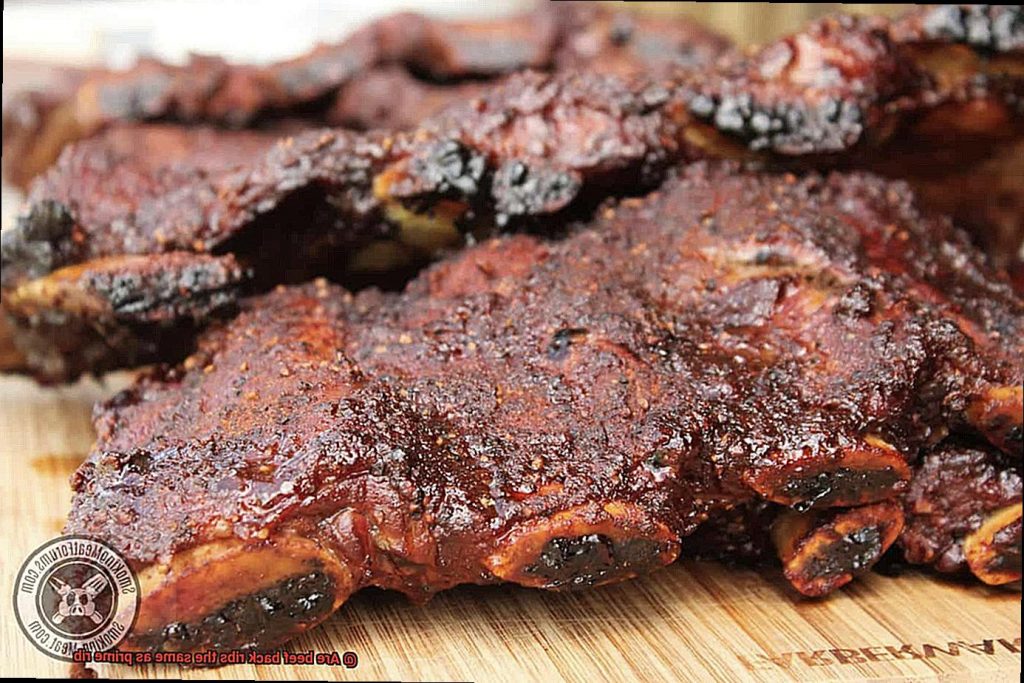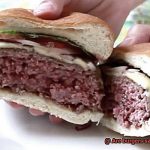Hey there, meat aficionados. Are you someone who loves to sink their teeth into a succulent beef cut but gets confused with all the different types out there? If so, you’re in good company. One of the most common questions that people ask is whether beef back ribs are the same as prime rib.
Now, it’s easy to see why this confusion arises. After all, both cuts contain the word ‘rib.’ But let us tell you, that’s where the similarities end. Prime rib is sourced from the rib section of a steer and is renowned for its tender and juicy meat. It’s no surprise that it’s a staple in high-end restaurants around the world. On the other hand, beef back ribs are obtained from near the spine of a cow’s back and are known for their meaty and flavorful taste.
In this blog post, we’ll take you on an exciting journey exploring these two popular cuts of beef. We’ll delve deep into their unique features and differences while also sharing some tips on how to prepare them like a pro. You can expect to learn about their history and origin along with some expert advice on selecting the best ones.
So get ready to become an expert in everything related to beef as we embark on this adventure of discovering what sets beef back ribs apart from prime rib.
Contents
Comparison of Cuts: Where Do They Come From?
When it comes to cuts of beef, the options are endless. But two cuts that often get confused are beef back ribs and prime rib. So, where do they come from and what makes them unique? Let’s dive in.
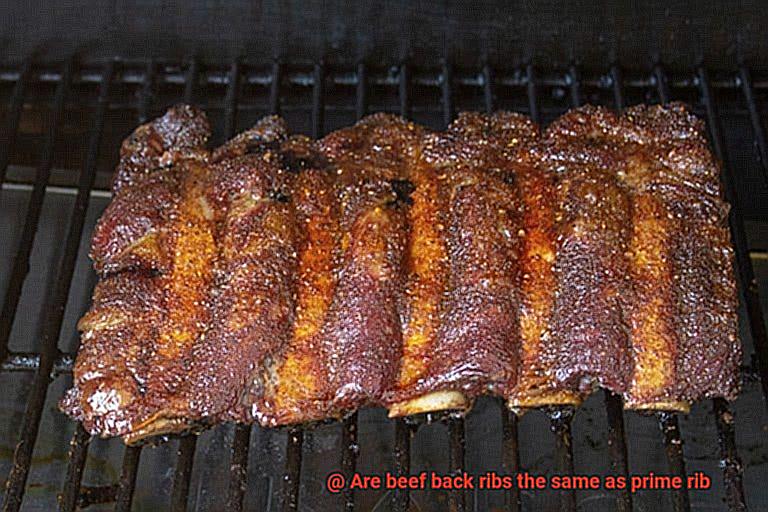
Beef back ribs are taken from the lower portion of the rib section, closer to the spine, specifically from the sixth through twelfth ribs. These ribs have a higher bone-to-meat ratio compared to other rib cuts, resulting in a smaller piece of meat. On the other hand, prime rib is taken from the upper rib section of the cow, specifically from the standing rib roast which includes ribs six through twelve as well as the meat in between each rib. This results in a larger piece of meat with a higher meat-to-bone ratio compared to beef back ribs.
But that’s not all – these two cuts also differ in their flavor and texture. Beef back ribs have a rich beefy flavor and tender meat but require longer cooking times to become tender. They are often smoked or grilled and served as a rack or individual ribs. Prime rib, on the other hand, is a more premium cut of beef due to its larger size and tender, juicy meat. It can be cooked using a variety of methods, including roasting, grilling, and even smoking.
When it comes to cooking preferences, beef back ribs are popular for grilling and smoking due to their flavorful meat and high-fat content. Prime rib, on the other hand, is typically roasted in an oven but can also be grilled or smoked for added flavor.
Price and Size Considerations
I am here to guide you through the price and size considerations of these two delectable beef cuts.
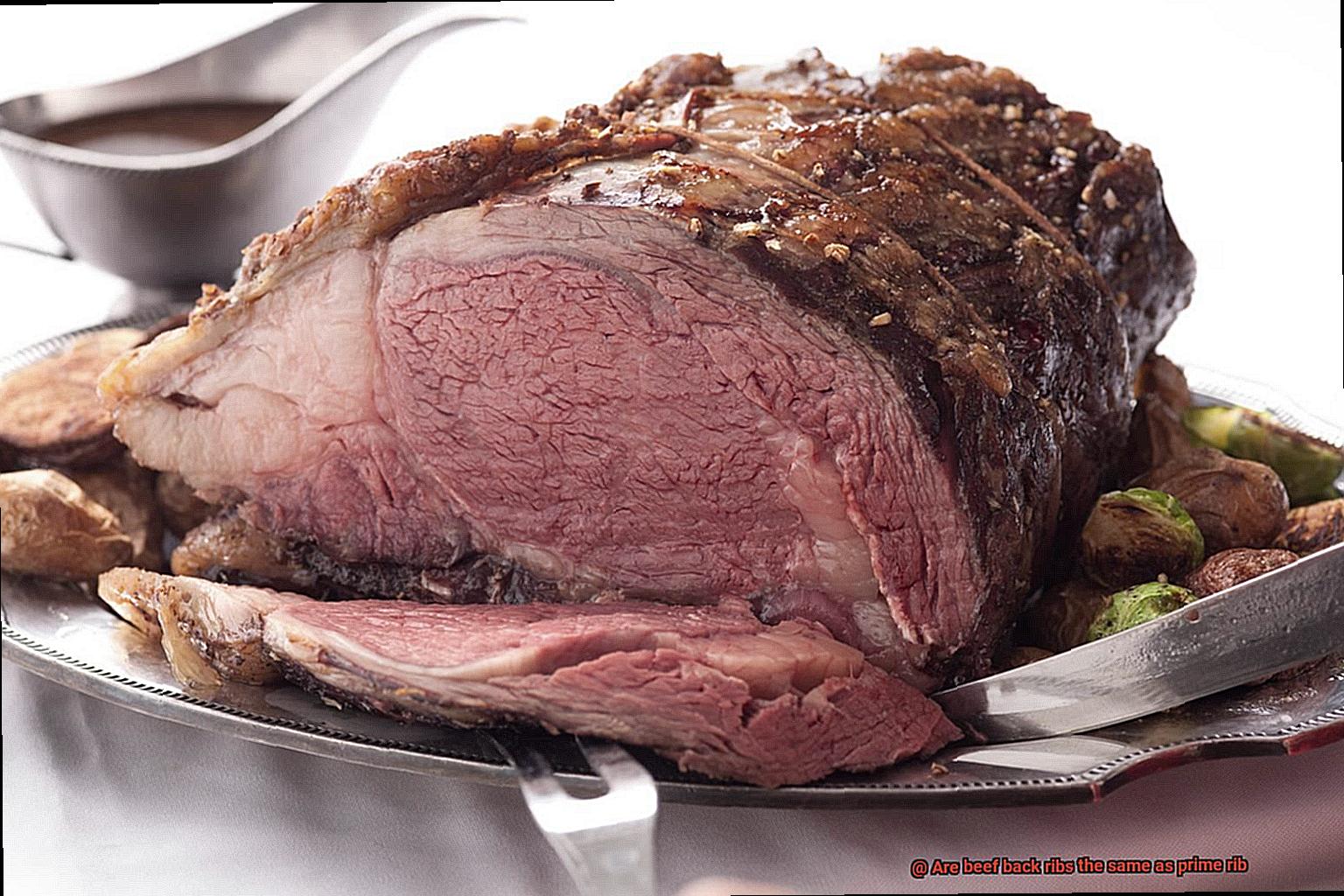
Let’s start by discussing prime rib. This premium cut is renowned for its exceptional tenderness and marbling, making it a favorite among meat aficionados. Prime rib is typically sold in large roasts that can weigh up to 18 pounds, reflecting its high quality and price point. The meat is cut from the rib section of the cow, which is known for its rich flavor and fat content.
In contrast, beef back ribs are cut from the lower portion of the cow’s back ribs and are generally smaller than prime rib roasts. They offer a more budget-friendly option, making them a practical choice for smaller families or individuals. Beef back ribs have a distinct flavor and are often sold in smaller portions, catering to those who prefer more manageable portions.
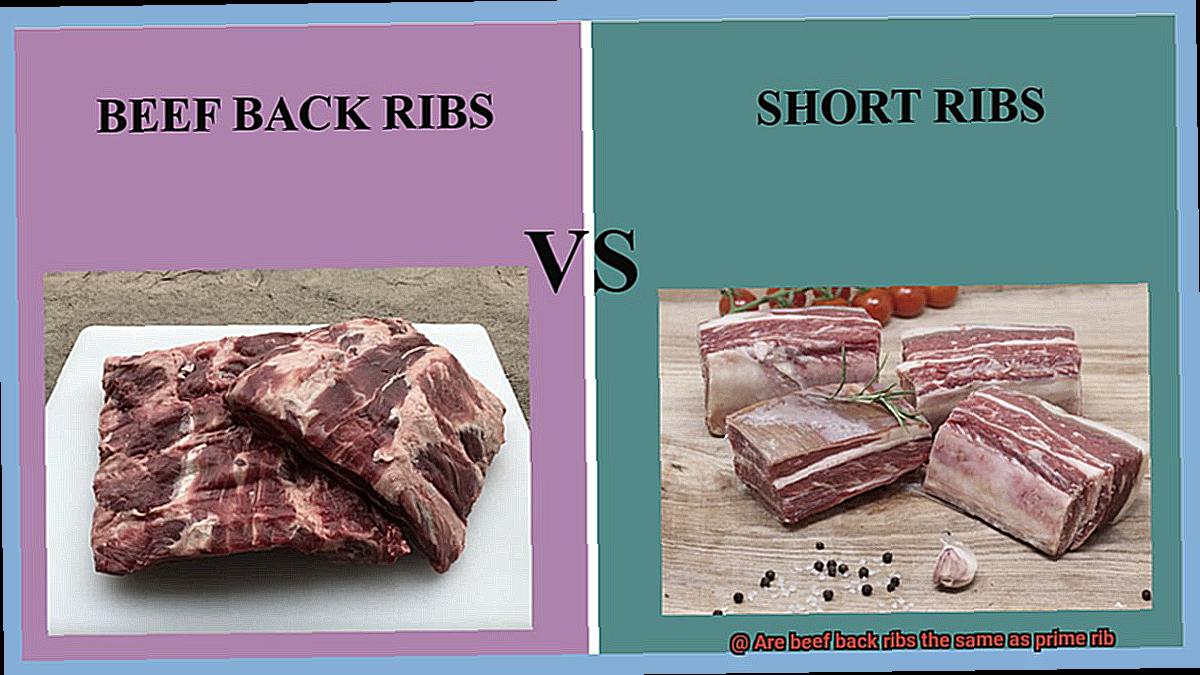
Now, let’s talk about grilling. Both prime rib and beef back ribs can be grilled to perfection with the right techniques. However, prime rib requires more time and attention to detail due to its larger size. The cooking process is longer and more complex, but the reward is worth it – a tender and juicy roast that melts in your mouth. On the other hand, beef back ribs can be grilled more quickly without compromising flavor or texture. They are ideal for those who crave a satisfying meal without spending hours in the kitchen.
Texture Differences: Tenderness and Cooking Times
Firstly, let’s discuss tenderness. Prime rib is celebrated for its exceptional tenderness and marbling, which makes it a preferred choice for steak lovers. In contrast, beef back ribs are a more affordable option with a unique flavor but fall short when it comes to tenderness.
Moving on to cooking times, beef back ribs require a longer cooking time of about 3-4 hours at a low temperature, while prime rib takes less time, about 2-3 hours at a higher temperature. This discrepancy in cooking time is due to the fact that beef back ribs have more connective tissue, which takes longer to break down when cooking.
To achieve the desired texture and tenderness for each cut of meat, distinct cooking methods are recommended. For beef back ribs, slow-cooking methods such as smoking or braising are recommended to break down the connective tissue and make them tender. While for prime rib, roasting in the oven at high temperatures is the most popular method to cook it to perfection.
It’s worth noting that both cuts of meat have their unique flavors and textures. The key is to know how to cook them correctly to achieve the desired result. Whether you choose to grill beef back ribs or roast prime rib, both can be enjoyed as an excellent meal with family and friends.
In essence, texture differences between beef back ribs and prime rib are significant. While prime rib is considered much more tender than beef back ribs, the latter requires more time for cooking due to its connective tissue. With different cooking methods available for each cut of meat, achieving the perfect texture and tenderness is possible.
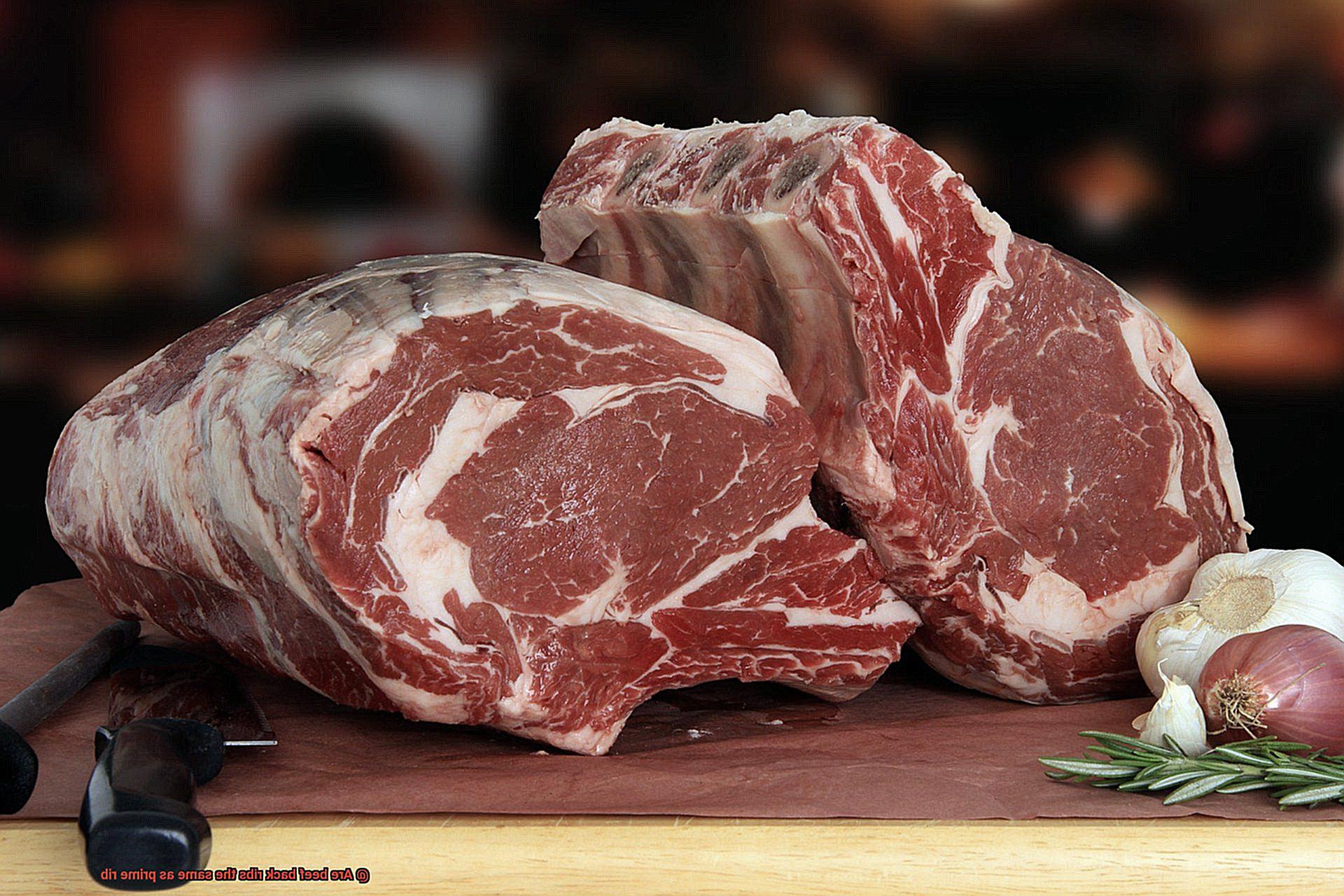
Flavor Profiles
Let’s dive into beef back ribs, also known as short ribs or plate ribs. These cuts come from the lower rib section of the cow and are known for their rich, meaty flavor. The meat is marbled with fat, which gives it a tender and succulent texture. With every bite, you’ll experience a mouth-watering combination of sweet and savory flavors that pairs perfectly with bold and tangy seasonings. If you’re someone who loves big, hearty flavors, then beef back ribs are the perfect choice for you.
Moving on to prime rib, a cut that comes from the upper rib section of the cow. Known for its tender and juicy texture, it has a more mild flavor compared to its beef back rib counterpart. However, don’t let that fool you – the meat is marbled with fat, giving it a subtle taste that is often described as buttery and smooth. If you’re someone who prefers a more delicate flavor profile, then prime rib is definitely your go-to option.
In summary, while both cuts are delicious in their own right, they have distinct differences in their flavor profiles that make them unique. Not only do they come from different sections of the cow, but their marbling and texture also contribute to their distinct tastes. For those who crave bold and meaty flavors, beef back ribs are the perfect choice. Whereas for those who prefer subtle and smooth taste profiles, prime rib is definitely the way to go.
Grilling vs Roasting: Which Method Is Best?
The debate between grilling and roasting when it comes to cooking beef back ribs and prime rib has been ongoing for years. As an expert in everything meaty, I’m here to guide you through the differences between these two popular cooking methods.
Let’s start with grilling. This method involves cooking your beef over an open flame, which can give it a crispy exterior and infuse it with smoky flavor. It’s a great choice for those who want their beef cooked quickly and with a little bit of char. Plus, grilling is perfect for outdoor gatherings, whether it be a summertime barbecue or a family get-together.
However, grilling does have its drawbacks. Maintaining the temperature can be tricky, and there’s always the risk of burning your meat. To avoid this, ensure that you use indirect heat and keep a close eye on your beef as it cooks. Additionally, grilling may not be the best choice for large cuts of meat like prime rib, which can take longer to cook through.
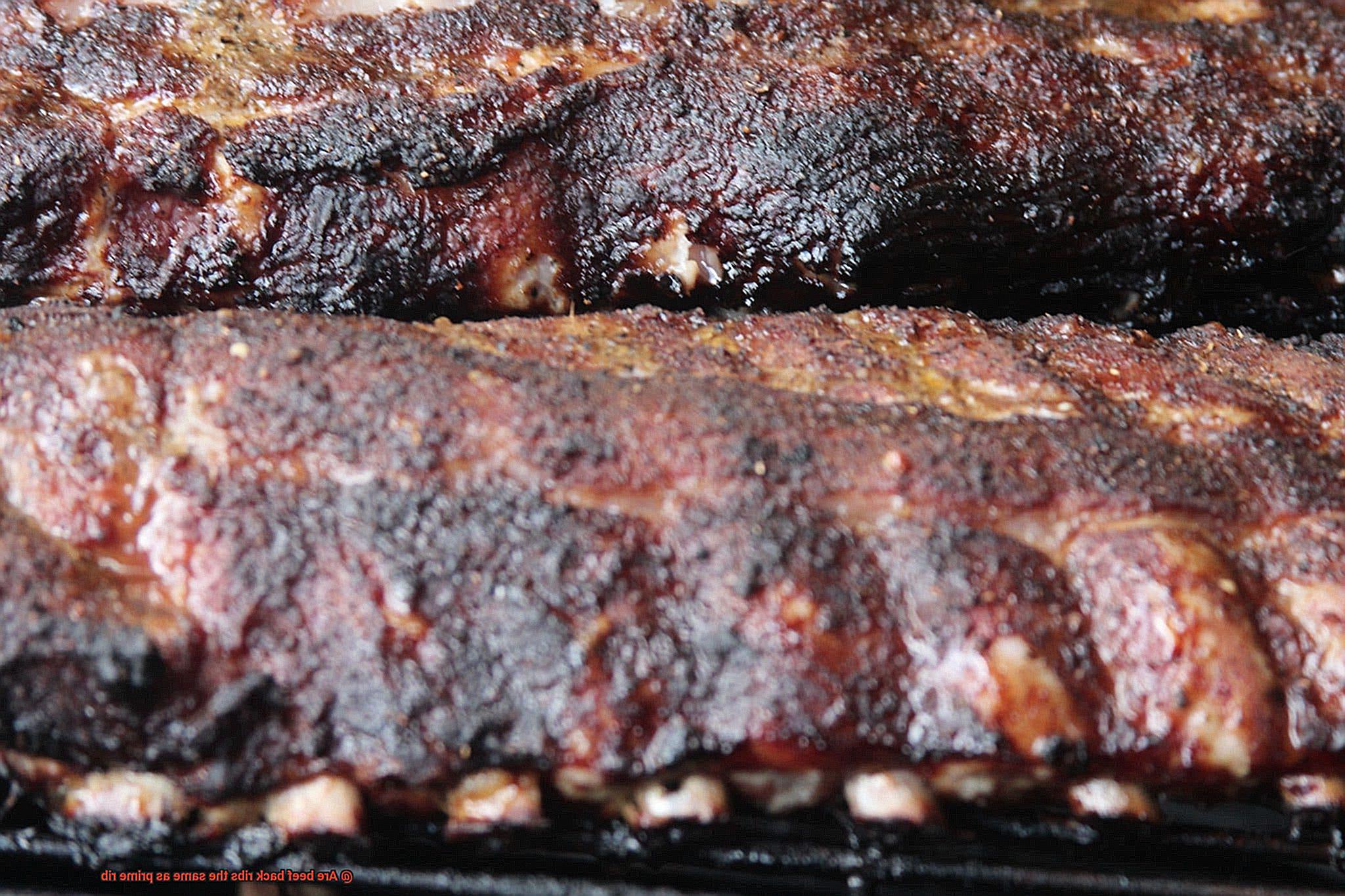
On the other hand, roasting is a slower cooking method that allows your beef to cook evenly throughout. This is particularly important for large cuts like prime rib that need to be cooked thoroughly to ensure food safety. Roasting also allows you to season your beef with herbs and spices, creating a depth of flavor that can’t be achieved through grilling alone.
Despite its advantages, roasting also has its downsides. It can take longer than grilling and may require more attention to detail when it comes to monitoring the temperature. Additionally, if you’re looking for a crispy exterior on your beef, roasting may not be the best option.
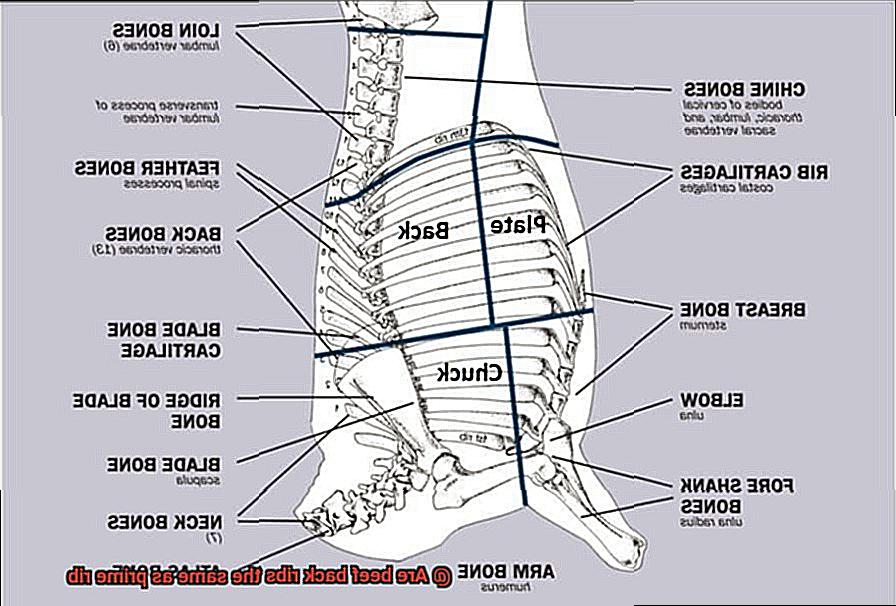
When deciding between grilling and roasting your beef back ribs or prime rib, it ultimately comes down to personal preference. To help you make an informed decision, consider these key factors:
- Time: If you’re short on time, grilling is a quicker option than roasting.
- Flavor: If you want a smoky flavor, grilling is the way to go. But if you want a depth of flavor, roasting allows you to season your beef with herbs and spices.
- Size: For smaller cuts like beef back ribs, grilling is an excellent option. But for large cuts like prime rib, roasting ensures even cooking throughout.
Tips for Cooking the Perfect Prime Rib or Beef Back Ribs
Look no further than these key tips for achieving the ultimate flavor and tenderness.
Choosing the Right Cut:
For prime rib, the key is to choose a well-marbled piece of beef with a thick layer of fat on top. This will ensure that the meat stays juicy and tender during cooking. When it comes to beef back ribs, opt for meaty ribs that haven’t been trimmed too much. This will help keep them moist and succulent during cooking.
Seasoning:
When it comes to seasoning prime rib, simple is often best. A blend of salt, pepper, and garlic rubbed onto the meat before cooking can enhance the natural flavors of the beef. Meanwhile, for beef back ribs, you can experiment more with your seasonings. A dry rub made up of paprika, cumin, and chili powder can add a smoky depth of flavor to your ribs.
Cooking Methods:
Both prime rib and beef back ribs can be cooked in the oven or on the barbecue. For oven-roasting, start by cooking at a high temperature (around 450°F) for the first 15-20 minutes to create a delicious crust on the outside of the meat. Next, lower the heat to around 325°F and continue cooking until the internal temperature of the meat reaches your desired level of doneness. If you’re grilling your meat, preheat your grill to high heat and oil the grates well to prevent sticking. Be sure to turn your meat frequently until it’s cooked through to your liking.
Resting:
After cooking your prime rib or beef back ribs, it’s important to let them rest for at least 15-20 minutes before carving and serving. This will allow the juices to redistribute throughout the meat, ensuring that it’s moist and flavorful when served. For beef back ribs, consider wrapping them in foil and letting them rest for about 10 minutes to help keep them juicy.
Popular Recipes to Try
Prime rib and beef back ribs offer unique flavors and textures that will take your taste buds on a ride.
First up, we have the prime rib. This cut is known for its tenderness and rich flavor that makes it perfect for holiday dinners and special occasions. However, don’t limit yourself to just one meal a year. Here are some popular recipes you can try:
- Classic Prime Rib: Keep it simple with this classic recipe that lets the flavor of the meat shine through. Season with salt and pepper, roast at high heat, then lower the temperature until it reaches your desired level of doneness.
- Garlic Herb Prime Rib: Add some extra flavor with a garlic and herb rub. This recipe also includes a delicious red wine sauce that pairs perfectly with the meat.
- Prime Rib Sandwiches: Don’t let any leftovers go to waste. Use thinly sliced prime rib to make delicious sandwiches with crusty bread, horseradish sauce, and caramelized onions.
Now, let’s move on to beef back ribs. These smaller ribs may not be as well-known as their larger counterparts, but they pack in a lot of flavor. Here are some popular recipes to try:
- Grilled Beef Back Ribs: Keep it simple by grilling the ribs and brushing them with BBQ sauce. Perfect for summer cookouts.
- Slow Cooker Beef Back Ribs: Let your slow cooker do all the work with this easy recipe that results in fall-off-the-bone tender ribs.
- Korean Beef Back Ribs: Switch things up with this flavorful recipe that uses a marinade of soy sauce, brown sugar, garlic, and ginger for an international twist.
It’s important to note that while prime rib and beef back ribs are both delicious options, they are not the same cut of meat. Prime rib is taken from a different part of the cow than beef back ribs, and they have distinct differences in taste, texture, and cooking methods. However, both cuts can be used in a variety of recipes to create mouth-watering dishes that will impress any meat lover.
The Benefits of Eating Beef Back Ribs and Prime Rib
Beef back ribs and prime rib offer unique benefits that will satisfy your taste buds and nourish your body.
Let’s start with the meaty and tender beef back ribs. Not only are they a great source of protein, providing up to 25 grams per serving, but they also contain essential nutrients like iron and zinc. This nutrient-dense cut of meat is perfect for grilling or smoking and can be enjoyed as a satisfying meal or snack.
Now, let’s talk about the incredibly tender prime rib. This roast is known for its rich flavor and contains healthy fats that can actually reduce inflammation in the body. Additionally, prime rib is packed full of vitamins and minerals like vitamin B12, selenium, and phosphorus, which are crucial for proper bodily function.
When it comes down to it, both beef back ribs and prime rib offer impressive nutritional benefits that contribute to a balanced diet. So why not indulge in a mouth-watering cut of beef that will satisfy your taste buds while nourishing your body?
hTt3wQp2dbQ” >
Conclusion
In summary, beef back ribs and prime rib may share the word ‘rib,’ but they are distinct cuts of meat with their own unique qualities. While beef back ribs boast a hearty and robust flavor profile, prime rib is known for its succulent and tender meat. Beef back ribs require longer cooking times to reach optimal tenderness, often calling for smoking or grilling methods. In contrast, prime rib can be prepared using various cooking techniques such as roasting or grilling.
When it comes to cost and size, prime rib is a premium cut of meat that typically weighs up to 18 pounds in a single roast. On the other hand, beef back ribs are smaller portions that offer an affordable alternative. Both cuts can be grilled or roasted depending on your preference and time constraints.
To achieve the perfect cook on either cut, selecting the right meat is crucial along with proper seasoning and cooking methods. It’s also essential to rest the meat after cooking to allow the juices to evenly distribute throughout before serving.
Lastly, both beef back ribs and prime rib have impressive nutritional benefits that contribute to a healthy diet including protein, iron, zinc, healthy fats, vitamin B12, selenium, and phosphorus.

